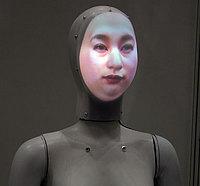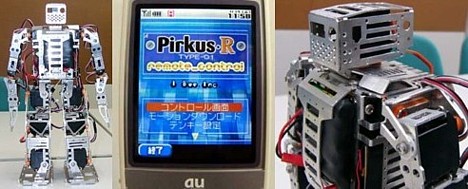 As the number of willing blood donors in Japan continues to decline, the Japanese Red Cross is stepping up efforts to reverse the trend by offering a unique range of services at blood donation sites.
As the number of willing blood donors in Japan continues to decline, the Japanese Red Cross is stepping up efforts to reverse the trend by offering a unique range of services at blood donation sites.
These services include hand massages by Akihabara "maids," hair/scalp health checks, and palm readings. The Japanese Red Cross has organized the services in part to increase the number of repeat donors, considered critical in combating the declining number of blood donors resulting from the aging of the population.
At the Akiba Blood Donation Room near JR Akihabara station, a young woman wearing a white apron over a dark green one-piece dress greets a donor as he enters. "Welcome back, my lord," she says. After the man is finished with his blood draw, she gives him a 10-minute hand massage. The maid, who is an employee at a local foot care salon, was enlisted by the Red Cross in its attempt to capitalize on the local "maid cafe" boom. The Akiba Blood Donation Room is offering this service until the end of March.
A spokesman for the Akiba Blood Donation Room says there were initial concerns about whether the service went too far. But in an attempt to boost the number of weekday donors -- whose numbers are less than half those of their weekend counterparts -- they decided to go ahead and offer the special service to the first 10 people on Mondays, Wednesdays and Thursdays.
Some donors are surprised to encounter a young woman dressed as a maid. But one donor, after giving blood, remarked, "It?s very 'Akiba.' It's fun.?
Several years ago, the Shinjuku station (east exit) blood donation site began offering manicures and hair care advice provided by specialists from the Japan Hair Science Association. Now, those services are firmly established. After the Yurakucho blood donation site began offering tarot card and palm readings last year, many repeat donors began scheduling their visits to coincide with days that fortune-telling services were offered.
Fun aside, the Japanese Red Cross sees the declining number of blood donors as a serious problem. In 1993, 7.2 million people gave blood in Japan, compared to 5.6 million in 2003. Donors under 30 years of age, who made up 47% of the total in 1993, fell to 35% of the total in 2003.
Over the next five years, the Red Cross hopes to increase the number of repeat donors (who give more than once a year) from the current number of 930,000 to 1.2 million. They will begin offering other services to people who register for membership on the "repeater" homepage, such as free health consultations from doctors and health counselors at each blood center.
The demand for blood fluctuates with the occurrence of major disasters and accidents. By boosting the number of weekday donors and repeaters, the Red Cross hopes to secure a stable supply of safe blood.
[Source: Yomiuri Shimbun]
 Chatty, a talking mannequin with a human face, is on display at the Tokyo International Anime Fair 2006 (at Tokyo Big Sight through March 26).
Chatty, a talking mannequin with a human face, is on display at the Tokyo International Anime Fair 2006 (at Tokyo Big Sight through March 26).
 As the number of willing blood donors in Japan continues to decline, the
As the number of willing blood donors in Japan continues to decline, the  At a press conference held in Tokyo on March 23, composer Ryuichi Sakamoto made a public appeal to the government to exempt all secondhand electrical goods from the Electrical Appliance and Material Safety Law (a.k.a. PSE Law, or DENAN). The law, which is set to take effect April 1, will prohibit businesses from selling electrical goods that do not bear the PSE mark (that signifies compliance with the law?s safety standards). In other words, before putting products up for sale, dealers will be forced to file paperwork and perform tests (such as 1,000 volts for one minute) on each and every pre-2002 electrical product in order to obtain a PSE mark. Though the government recently revised the law so that it does not apply to certain "vintage" electric instruments with high scarcity value, Sakamoto called upon the government to expand the exemption to all secondhand electrical goods.
At a press conference held in Tokyo on March 23, composer Ryuichi Sakamoto made a public appeal to the government to exempt all secondhand electrical goods from the Electrical Appliance and Material Safety Law (a.k.a. PSE Law, or DENAN). The law, which is set to take effect April 1, will prohibit businesses from selling electrical goods that do not bear the PSE mark (that signifies compliance with the law?s safety standards). In other words, before putting products up for sale, dealers will be forced to file paperwork and perform tests (such as 1,000 volts for one minute) on each and every pre-2002 electrical product in order to obtain a PSE mark. Though the government recently revised the law so that it does not apply to certain "vintage" electric instruments with high scarcity value, Sakamoto called upon the government to expand the exemption to all secondhand electrical goods.

 Forget about fingerprints and DNA -- the way you smell has been added to the list of biometric data that can be used as personal identification. Police in China are now using body odor data to identify suspects in criminal cases.
Forget about fingerprints and DNA -- the way you smell has been added to the list of biometric data that can be used as personal identification. Police in China are now using body odor data to identify suspects in criminal cases.

